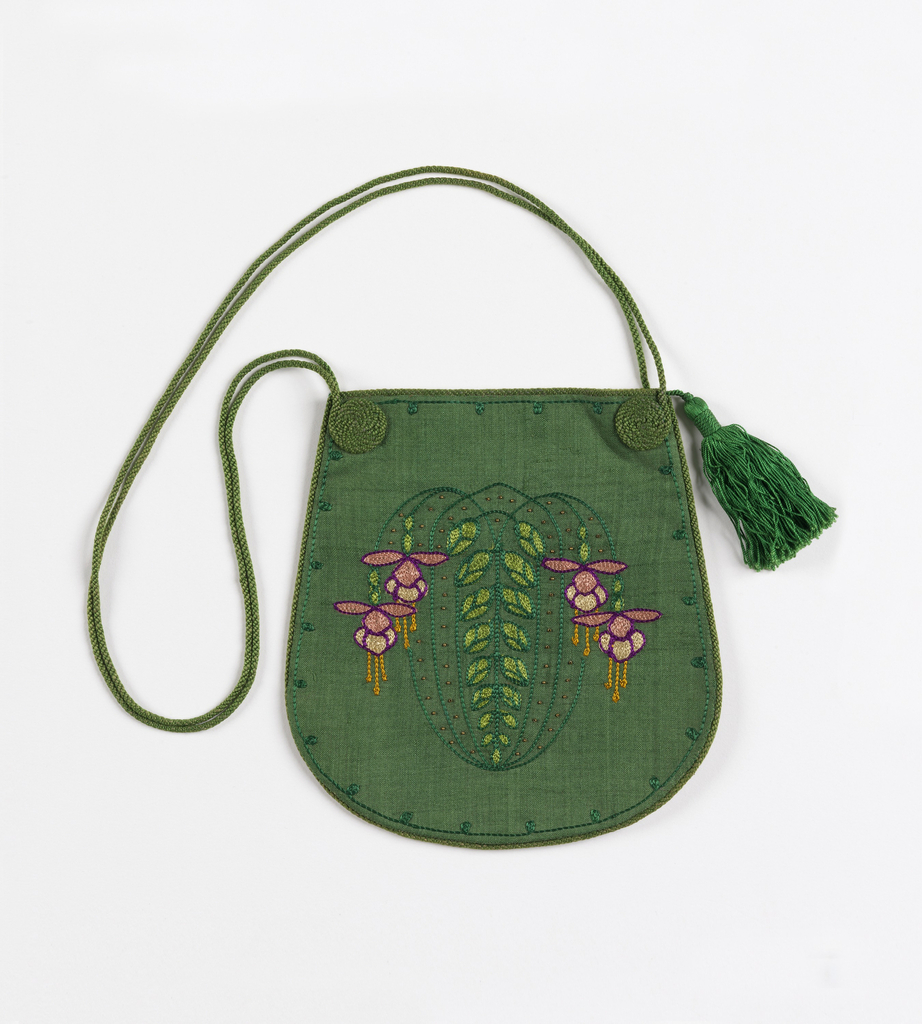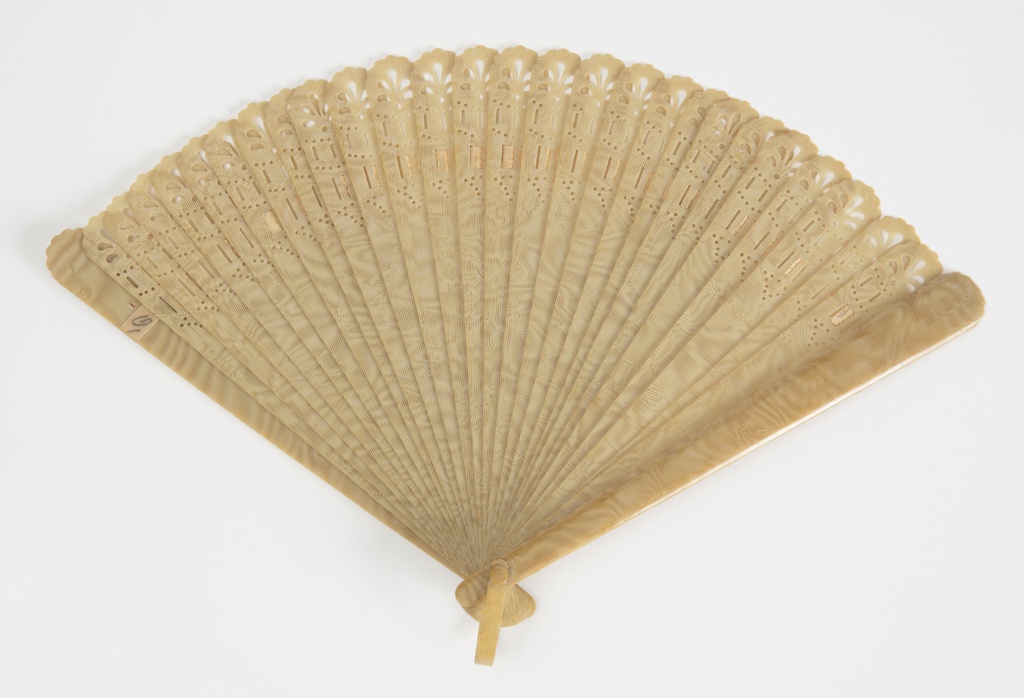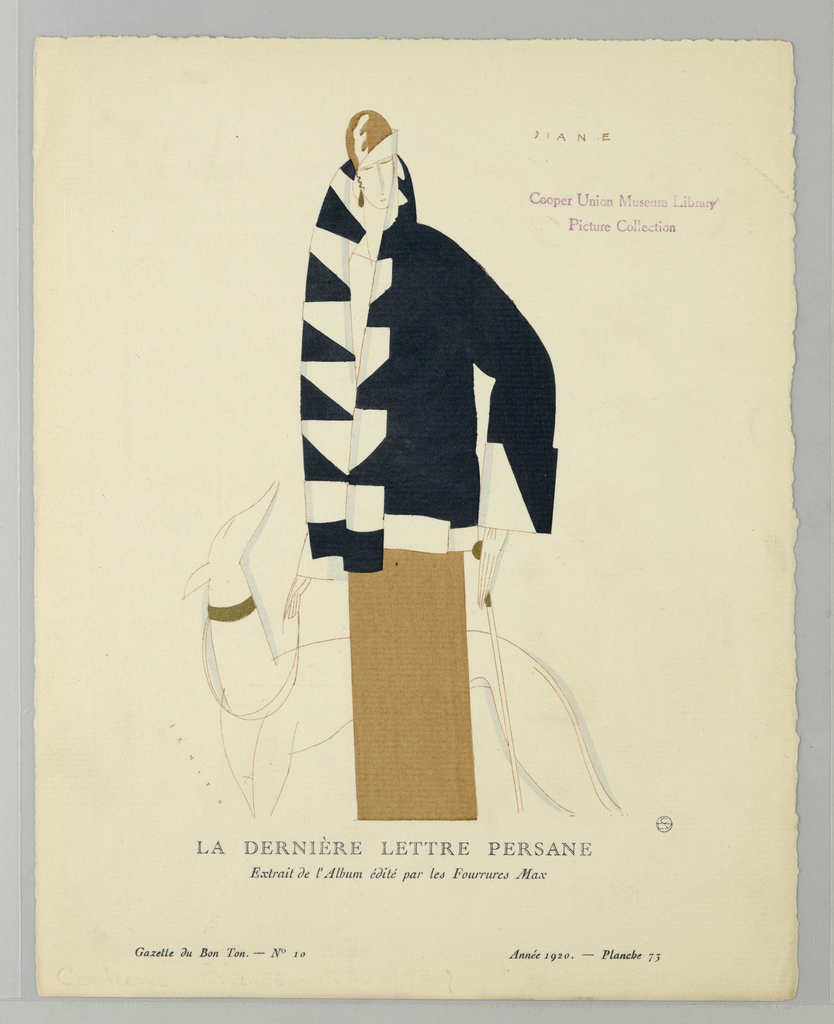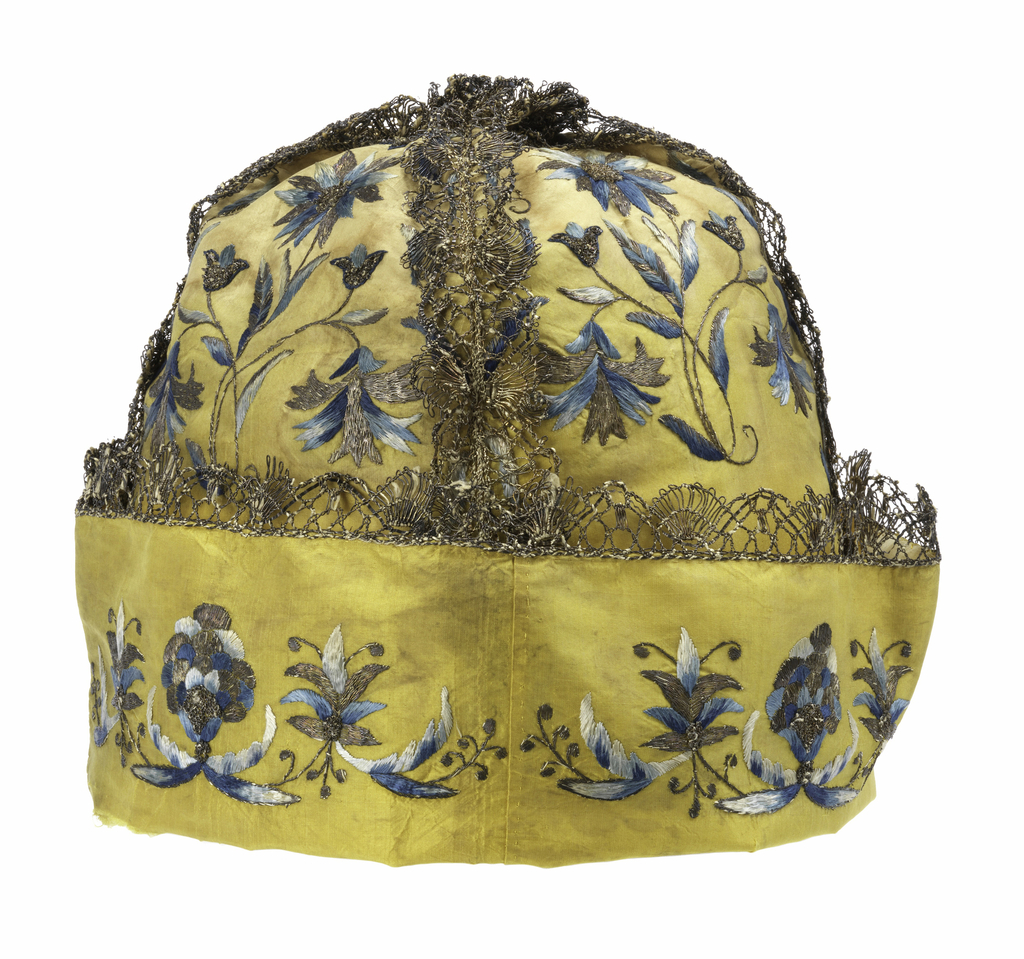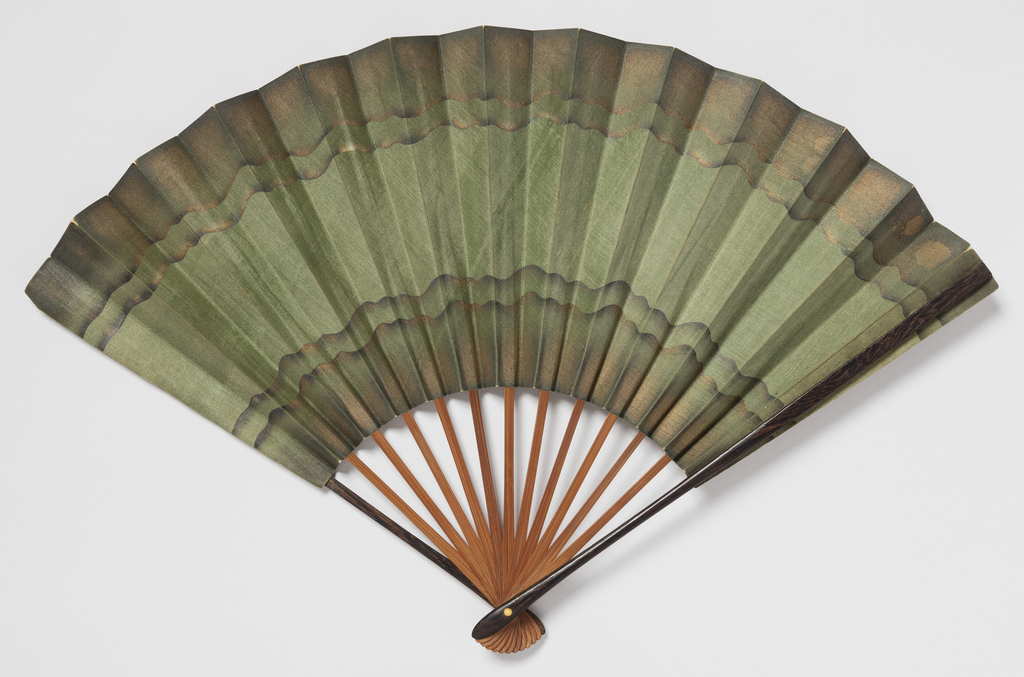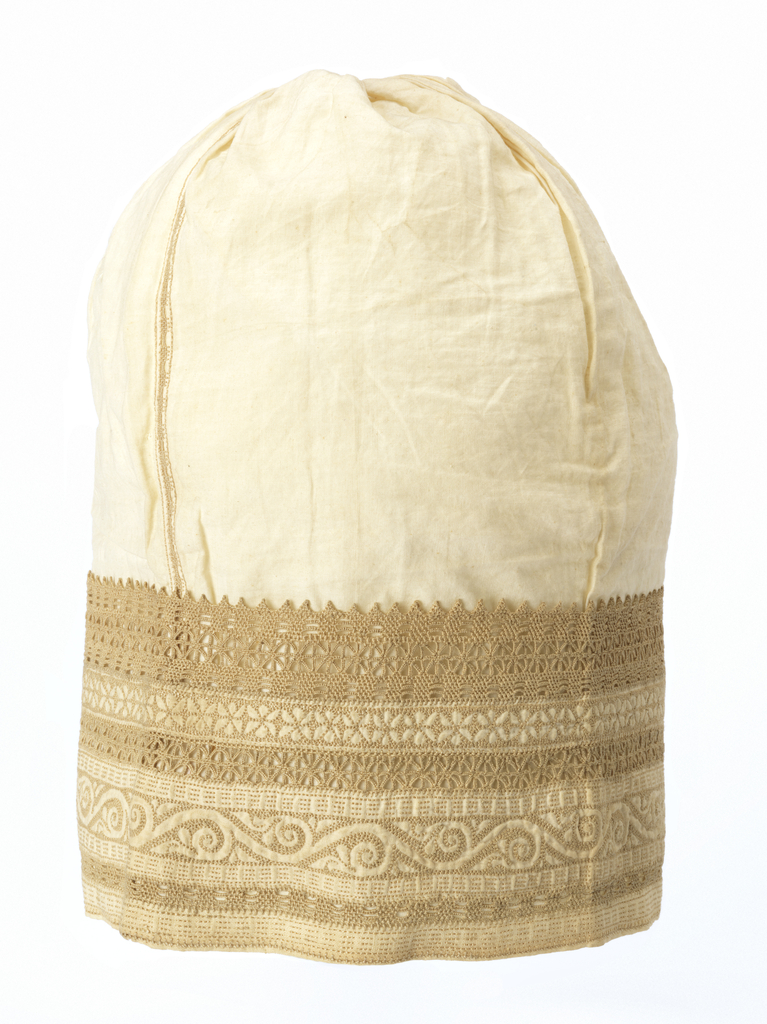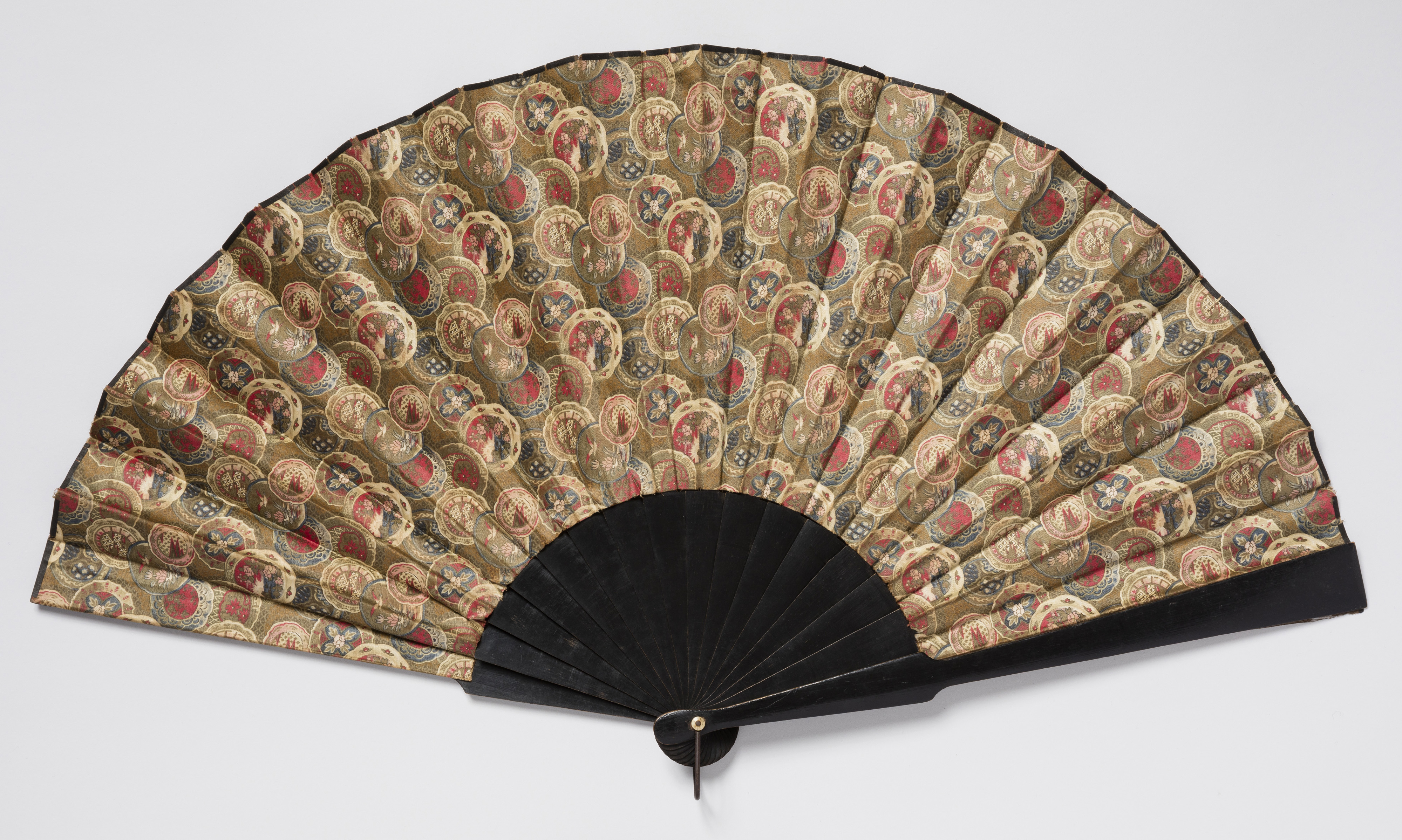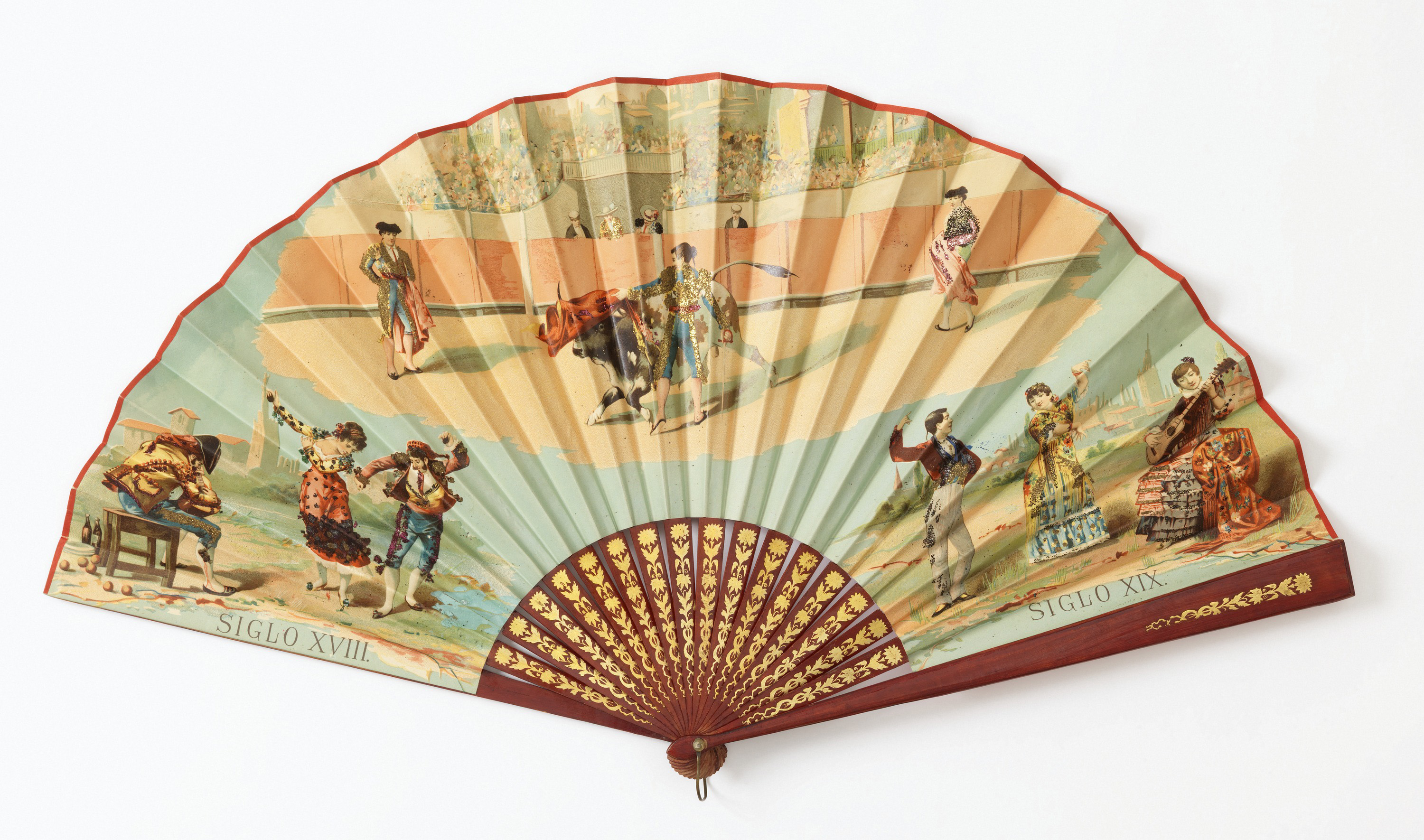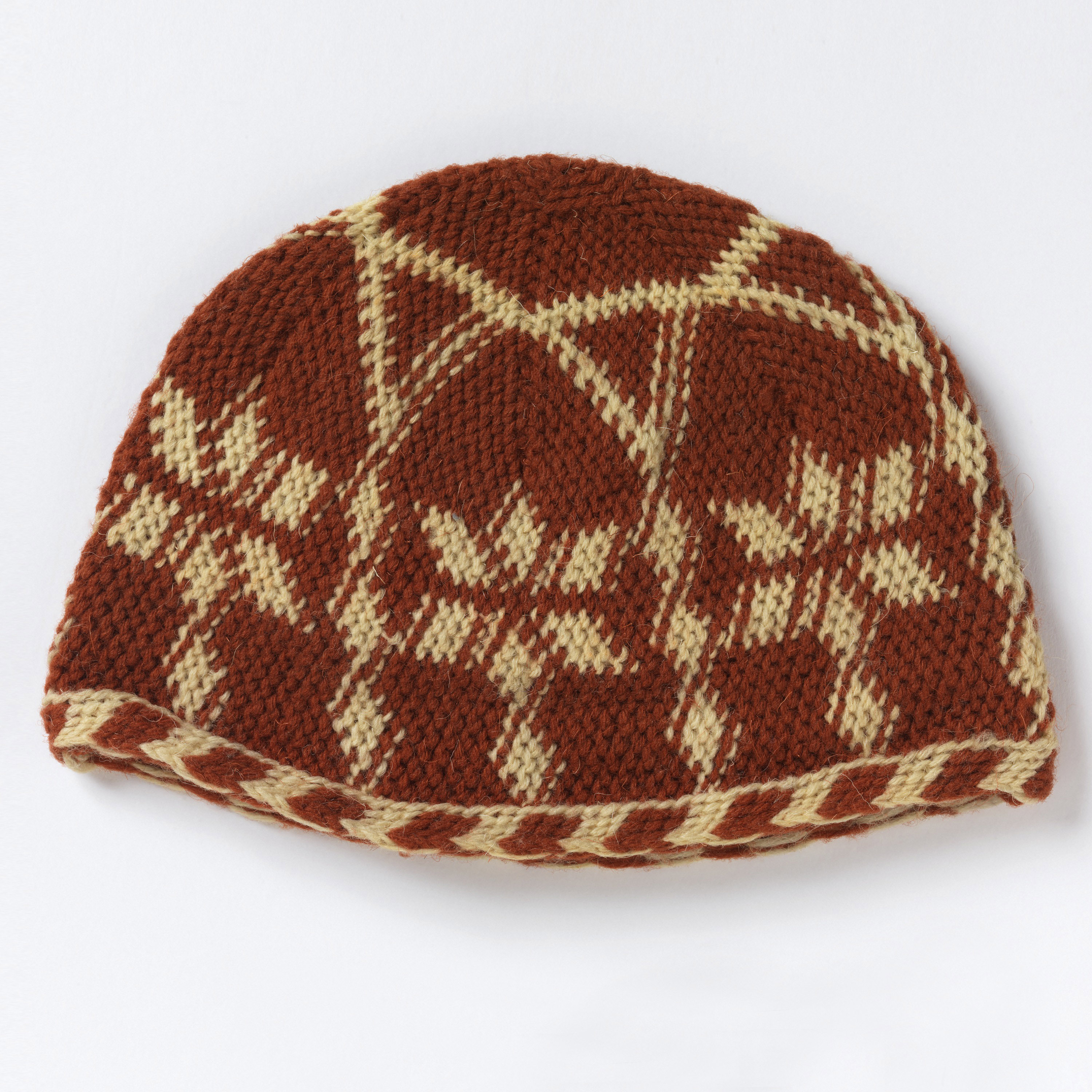Author: Rachel Pool This green purse is made from silk embroidery, plant fibers, and glass beads. A single tassel dangles from one side of the purse. Made between 1910 and 1912, the purse exhibits the Art Nouveau design style, indicated by the embroidered motif that displays organic patterns taken from nature, shown in the form...
This fan is in “good” condition for cellulose nitrate and therefore a rarity. Cellulose nitrate is an early plastic polymer invented in the mid-nineteenth century and derived from cellulose that is treated with nitric acid. The material gradually degrades, releasing nitric acid. This fan documents a time of experimentation when substitutions for costly natural materials,...
“Now that fashion has become an art, a fashion gazette must also be an art revue. So it will be with Gazette du Bon Ton.”—Lucien Vogel, 1886–1954 Pictured alone against a bare backdrop, the young woman of this fashion illustration sports a cloche hat and a sleek black and white coat with a voluminous collar...
This nightcap consists of four embroidered sections of cloth joined and bordered with braided lace made of silver-wrapped thread. The lower edge, embroidered on the opposite side, is folded up to form a brim. The style of the embroidery, which also uses silver-wrapped thread, is called chinoiserie (Chinese-esque), and includes imaginary, exotic-looking flowers that represent...
This elegant fan appears to be from the Meiji, or late Edo (mid-19th century) era, although its high quality sets it apart from standard export wares. It is meticulously crafted, with a subtle hand-painted leaf. Unusual for a Japanese folding fan, the front leaf is constructed of very finely plain-woven silk adhered to a paper...
The decoration on this cap, found only on the lower edge and the single seam, accents its simple design. Wigs were commonly worn in public in the seventeenth century, and many men had shaved heads. When the wig was removed, nightcaps were worn to protect the head from drafty interiors, even during the day. They...
This folding fan dating from the 1880’s-90’s is a perfect example of the expression of the Aesthetic Movement in costume accessories. Fans and the Aesthetic Movement are deeply intertwined. The Aesthetic style was strongly influenced by the decorative arts of Asia, where fans originated. During the late 19th century, Asian fans, particularly from Japan, were...
Folding fans, or abanicos, were considered must-have accessories in nineteenth century Spain. For women, they served as important tools in courtship, the ‘language of the fan’ expressing everything from ‘come hither’ to ‘don’t bother’ to hopeful admirers. The imagery painted or printed on fans also carried important messages. Many celebrate national events, such as the...
This wool cap, probably intended for a man, was made in the first half of the 20th century by the indigenous inhabitants of Morocco, the Amazigh people (also called the Berbers), who make up 40-60 percent of the population and have a language and culture distinct from Arabs. Amazigh textiles were mainly produced by women,...
